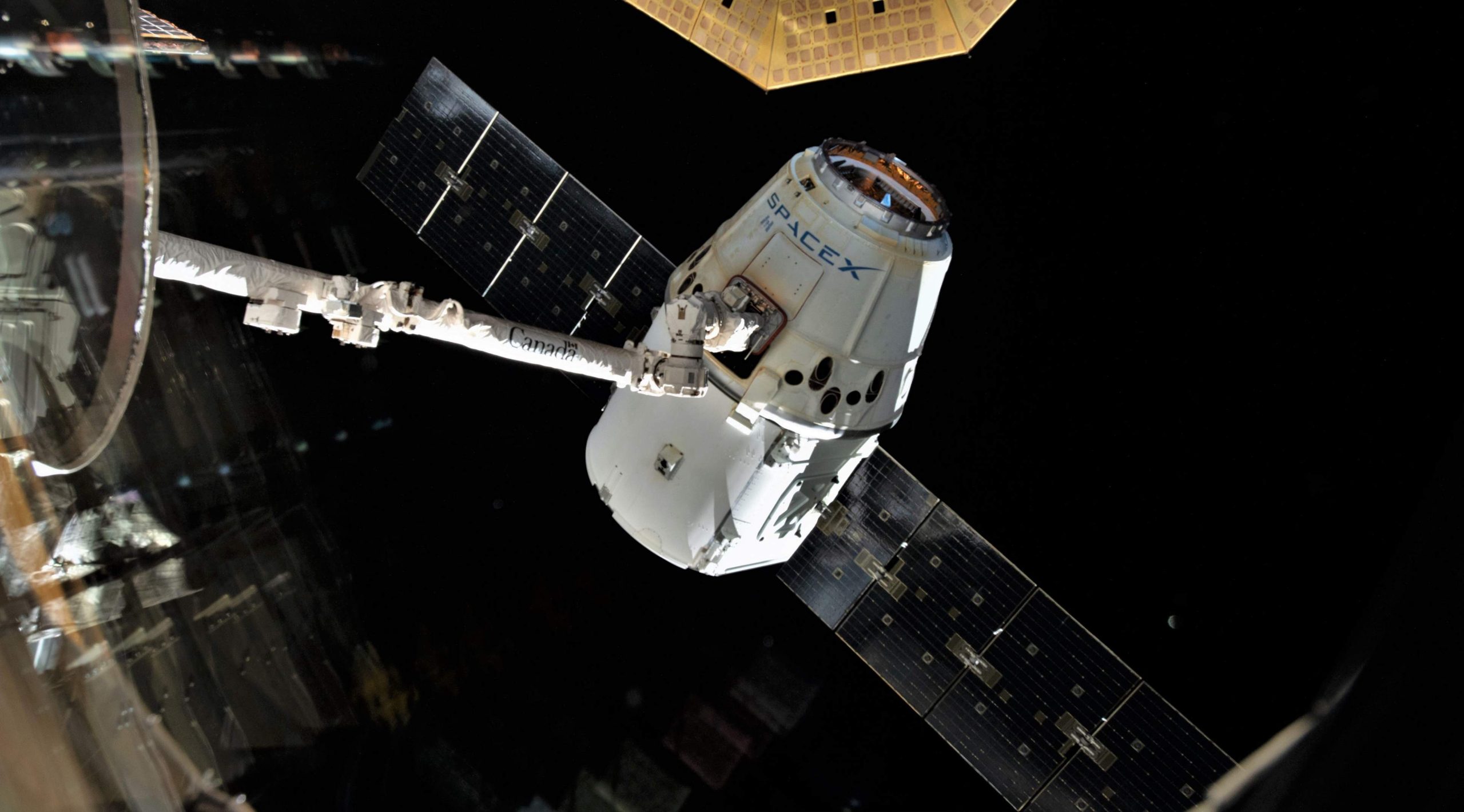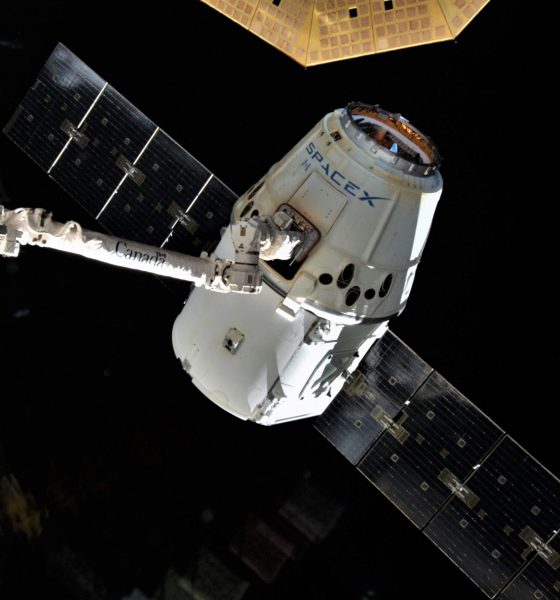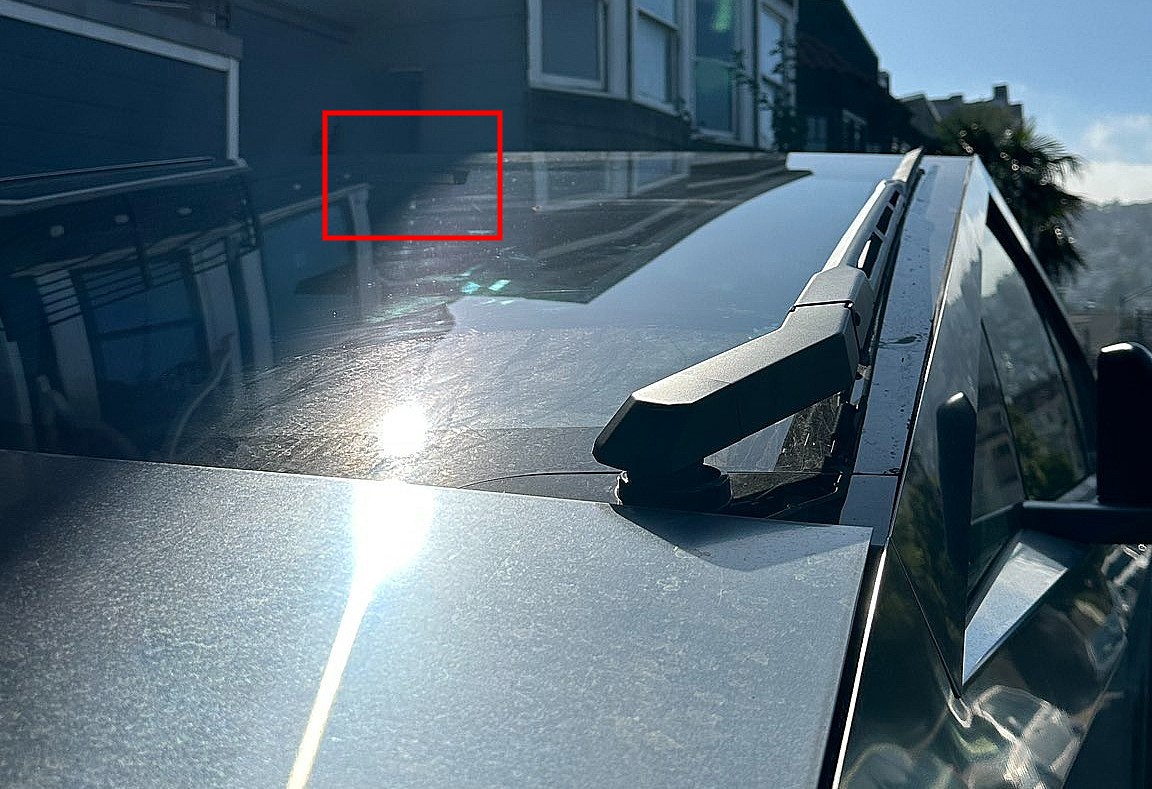

News
SpaceX’s Cargo Dragon spacecraft nears space station with 2.5 tons of cargo
Following a successful May 4th launch atop Falcon 9, SpaceX’s latest Cargo Dragon spacecraft is just a few hours away from starting its International Space Station (ISS) berthing sequence.
Scheduled to begin around 5:30 am EDT (09:30 UTC), SpaceX operations staff will command Dragon to continue a cautious ISS approach. Several hours later, the spacecraft will be quite literally grabbed by station astronauts and gently berthed with one of the space station’s several Common Berthing Mechanism (CBM) ports. Once Cargo Dragon has been safely joined with the ISS, the station’s crew of astronauts can begin the intensive process of unpacking more than 1500 kg (3300 lb) of pressurized cargo, including dozens of time-sensitive and complex science experiments.
Aside from the 1.5 tons of cargo contained inside Dragon’s climate-controlled cabin, ISS astronauts and ground-based NASA controllers will again use the space station’s robotic Canadarm2 manipulator to extract two large unpressurized payloads from Dragon’s trunk. The ‘flagship’ instrument of CRS-17 is NASA’s Orbiting Carbon Observatory-3 (OCO-3), an upgraded follow-on to OCO-2 that should dramatically improve the quantity and quality of data available on the distribution of carbon in the Earth’s atmosphere. The second trunk-stashed payload is known as STP-H6 and is carrying around half a dozen distinct experiments.

Both STP-H6 and OCO-3 will be installed on the outside of the space station with the help of Canadarm2, an extremely useful capability that limits the need for astronauts to suit up and perform risky and time-consuming EVAs (extra-vehicular activities) outside the ISS. With its trunk emptied, Cargo Dragon will eventually discard the section to burn up in Earth’s atmosphere just before the reusable capsule begins its own reentry.
Unlike several other spacecraft with service sections, both proposed, flying, or retired, SpaceX’s Dragon spacecraft strive to minimize the complexity and cost of their expendable service sections. For both Cargo and Crew Dragon, the trunk serves as a structural adapter for unpressurized payloads and the Falcon-Dragon interface, hosts solar arrays and radiators, and doesn’t do much else. All propulsion, plumbing, and major avionics are kept within the capsule to maximize reusability.
Defining “slow and steady”
The process of berthing or docking with the ISS is a fundamentally cautious thing, developed by NASA, Roscosmos, and other international partners through forced and painful trial and error. In short, the road to today’s cautious procedures has been paved with countless failures and close calls over decades of space activity. For Cargo Dragon, the process involves berthing, more passive and less complex than docking. Outside of a dozen or so meters, the processes begin quite similarly. Cargo Dragon (Dragon 1) will very slowly approach the station’s several-hundred-meter keep out zone, typically no faster than a few m/s (mph).
Then follows a back-and-forth process of stop and go, in which SpaceX commands Dragon forward, halts at set locations, verifies performance and station readiness with NASA, and repeat. Once within 10 or so meters of the ISS, Dragon will begin carefully stationkeeping, essentially a version of formation flying without a hint of aerodynamic forces. ISS astronauts will then command the Canadarm2 robotic arm toward a sort of target/handle combo located on the spacecraft. The arm follows similar stop-start procedures before finally grappling Dragon, at which point the astronauts in command are legally required (/s) to quip something along the lines of “We’ve caught ourselves a Dragon!”

From start to finish, the process takes about 1.5 hours under optimal conditions. Around 2.5 hours after that, Canadarm2 will physically berth Dragon with one of several ISS berthing ports. Soon after, station astronauts can open Dragon’s hatch, snag some fresh goodies, and begin the unpacking process. CRS-17’s ISS arrival operations will be covered live on NASA TV.
Check out Teslarati’s Marketplace! We offer Tesla accessories, including for the Tesla Cybertruck and Tesla Model 3.

News
Tesla aims to combat common Full Self-Driving problem with new patent
Tesla writes in the patent that its autonomous and semi-autonomous vehicles are heavily reliant on camera systems to navigate and interact with their environment.

Tesla is aiming to combat a common Full Self-Driving problem with a new patent.
One issue with Tesla’s vision-based approach is that sunlight glare can become a troublesome element of everyday travel. Full Self-Driving is certainly an amazing technology, but there are still things Tesla is aiming to figure out with its development.
Unfortunately, it is extremely difficult to get around this issue, and even humans need ways to combat it when they’re driving, as we commonly use sunglasses or sun visors to give us better visibility.
Cameras obviously do not have these ways to fight sunglare, but a new patent Tesla recently had published aims to fight this through a “glare shield.”
Tesla writes in the patent that its autonomous and semi-autonomous vehicles are heavily reliant on camera systems to navigate and interact with their environment.

The ability to see surroundings is crucial for accurate performance, and glare is one element of interference that has yet to be confronted.
Tesla described the patent, which will utilize “a textured surface composed of an array of micro-cones, or cone-shaped formations, which serve to scatter incident light in various directions, thereby reducing glare and improving camera vision.”

The patent was first spotted by Not a Tesla App.
The design of the micro-cones is the first element of the puzzle to fight the excess glare. The patent says they are “optimized in size, angle, and orientation to minimize Total Hemispherical Reflectance (THR) and reflection penalty, enhancing the camera’s ability to accurately interpret visual data.”
Additionally, there is an electromechanical system for dynamic orientation adjustment, which will allow the micro-cones to move based on the angle of external light sources.
This is not the only thing Tesla is mulling to resolve issues with sunlight glare, as it has also worked on two other ways to combat the problem. One thing the company has discussed is a direct photon count.
CEO Elon Musk said during the Q2 Earnings Call:
“We use an approach which is direct photon count. When you see a processed image, so the image that goes from the sort of photon counter — the silicon photon counter — that then goes through a digital signal processor or image signal processor, that’s normally what happens. And then the image that you see looks all washed out, because if you point the camera at the sun, the post-processing of the photon counting washes things out.”
Future Hardware iterations, like Hardware 5 and Hardware 6, could also integrate better solutions for the sunglare issue, such as neutral density filters or heated lenses, aiming to solve glare more effectively.
Elon Musk
Delaware Supreme Court reinstates Elon Musk’s 2018 Tesla CEO pay package
The unanimous decision criticized the prior total rescission as “improper and inequitable,” arguing that it left Musk uncompensated for six years of transformative leadership at Tesla.

The Delaware Supreme Court has overturned a lower court ruling, reinstating Elon Musk’s 2018 compensation package originally valued at $56 billion but now worth approximately $139 billion due to Tesla’s soaring stock price.
The unanimous decision criticized the prior total rescission as “improper and inequitable,” arguing that it left Musk uncompensated for six years of transformative leadership at Tesla. Musk quickly celebrated the outcome on X, stating that he felt “vindicated.” He also shared his gratitude to TSLA shareholders.
Delaware Supreme Court makes a decision
In a 49-page ruling Friday, the Delaware Supreme Court reversed Chancellor Kathaleen McCormick’s 2024 decision that voided the 2018 package over alleged board conflicts and inadequate shareholder disclosures. The high court acknowledged varying views on liability but agreed rescission was excessive, stating it “leaves Musk uncompensated for his time and efforts over a period of six years.”
The 2018 plan granted Musk options on about 304 million shares upon hitting aggressive milestones, all of which were achieved ahead of time. Shareholders overwhelmingly approved it initially in 2018 and ratified it once again in 2024 after the Delaware lower court struck it down. The case against Musk’s 2018 pay package was filed by plaintiff Richard Tornetta, who held just nine shares when the compensation plan was approved.
A hard-fought victory
As noted in a Reuters report, Tesla’s win avoids a potential $26 billion earnings hit from replacing the award at current prices. Tesla, now Texas-incorporated, had hedged with interim plans, including a November 2025 shareholder-approved package potentially worth $878 billion tied to Robotaxi and Optimus goals and other extremely aggressive operational milestones.
The saga surrounding Elon Musk’s 2018 pay package ultimately damaged Delaware’s corporate appeal, prompting a number of high-profile firms, such as Dropbox, Roblox, Trade Desk, and Coinbase, to follow Tesla’s exodus out of the state. What added more fuel to the issue was the fact that Tornetta’s legal team, following the lower court’s 2024 decision, demanded a fee request of more than $5.1 billion worth of TSLA stock, which was equal to an hourly rate of over $200,000.
Delaware Supreme Court Elon Musk 2018 Pay Package by Simon Alvarez
News
Tesla Cybercab tests are going on overdrive with production-ready units
Tesla is ramping its real-world tests of the Cybercab, with multiple sightings of the vehicle being reported across social media this week.

Tesla is ramping its real-world tests of the Cybercab, with multiple sightings of the autonomous two-seater being reported across social media this week. Based on videos of the vehicle that have been shared online, it appears that Cybercab tests are underway across multiple states.
Recent Cybercab sightings
Reports of Cybercab tests have ramped this week, with a vehicle that looked like a production-ready prototype being spotted at Apple’s Visitor Center in California. The vehicle in this sighting was interesting as it was equipped with a steering wheel. The vehicle also featured some changes to the design of its brake lights.
The Cybercab was also filmed testing at the Fremont factory’s test track, which also seemed to involve a vehicle that looked production-ready. This also seemed to be the case for a Cybercab that was spotted in Austin, Texas, which happened to be undergoing real-world tests. Overall, these sightings suggest that Cybercab testing is fully underway, and the vehicle is really moving towards production.
Production design all but finalized?
Recently, a near-production-ready Cybercab was showcased at Tesla’s Santana Row showroom in San Jose. The vehicle was equipped with frameless windows, dual windshield wipers, powered butterfly door struts, an extended front splitter, an updated lightbar, new wheel covers, and a license plate bracket. Interior updates include redesigned dash/door panels, refined seats with center cupholders, updated carpet, and what appeared to be improved legroom.
There seems to be a pretty good chance that the Cybercab’s design has been all but finalized, at least considering Elon Musk’s comments at the 2025 Annual Shareholder Meeting. During the event, Musk confirmed that the vehicle will enter production around April 2026, and its production targets will be quite ambitious.








